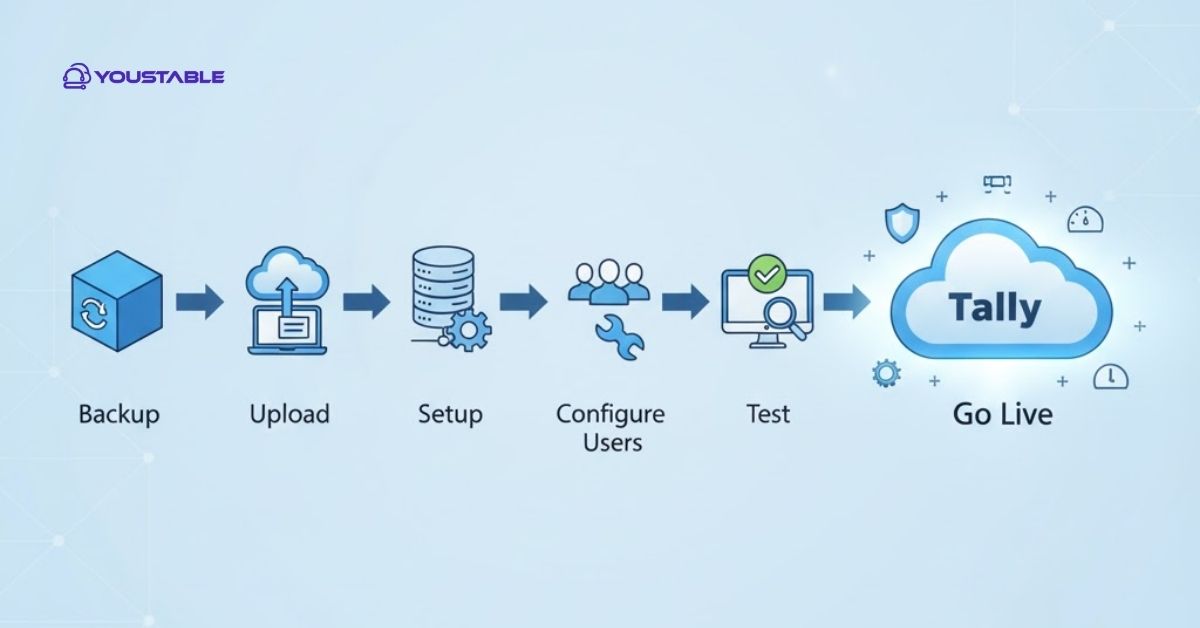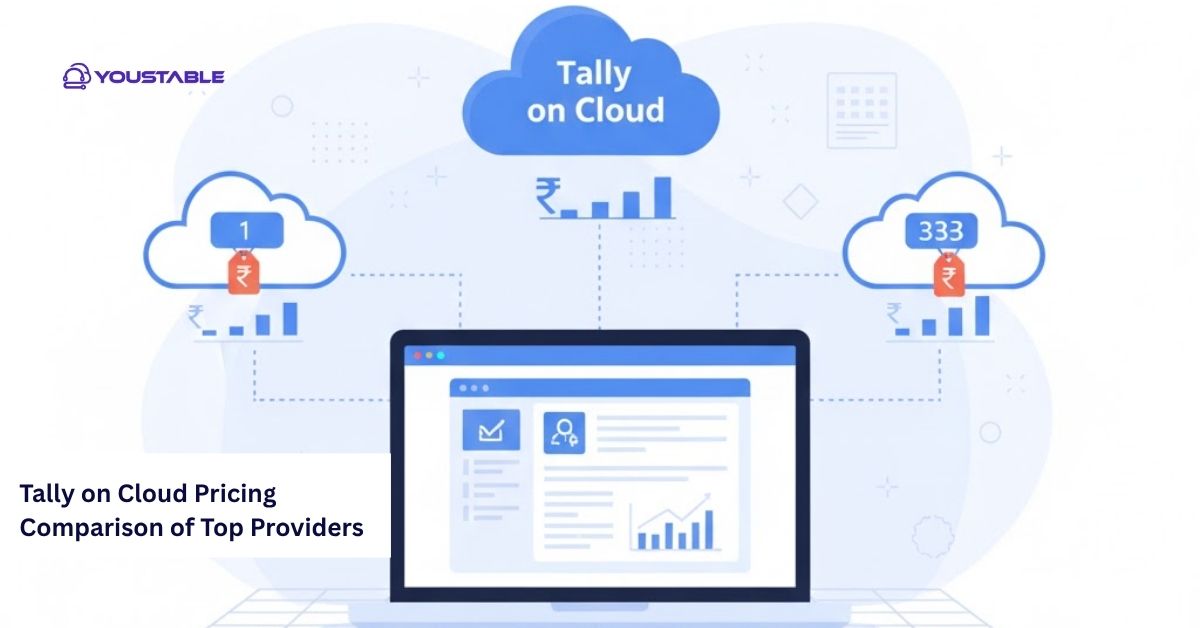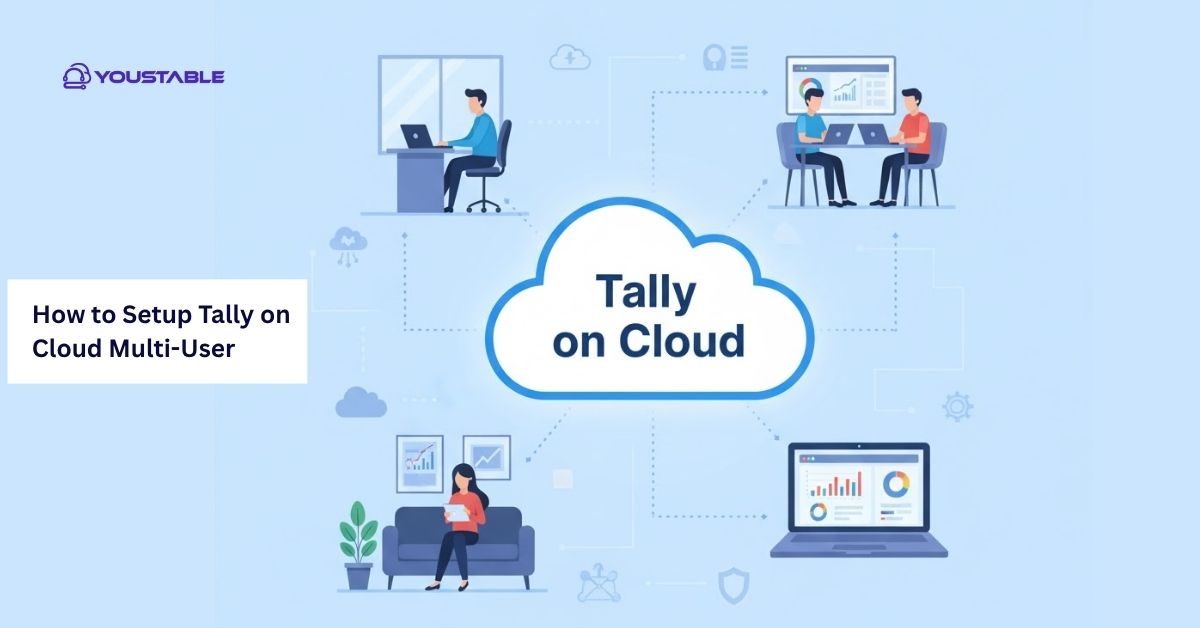Migrating from local to Tally to cloud has become a major shift for modern businesses. With the growing demand for flexibility, data security, and remote collaboration, many organizations are abandoning traditional local setups. Cloud-based Tally allows accountants and teams to work seamlessly from anywhere while ensuring that financial data remains protected and accessible. This digital shift not only simplifies daily accounting tasks but also helps businesses scale efficiently without worrying about infrastructure limitations.
While migrating from local to Tally to cloud might sound complex, the process is much simpler with the right hosting provider. Trusted cloud providers handle everything — from secure data migration to automatic backups and regular updates. With dedicated support and modern infrastructure, businesses can move their Tally data online smoothly, without disrupting operations or risking data loss.
Why Businesses Are Moving from Local Tally to Cloud?
Traditional local Tally setups, once efficient, now limit productivity. These systems work only on a single computer or local network, which restricts access for teams working remotely. Managing hardware, performing manual backups, and ensuring system security also become ongoing challenges.
In contrast, the migration from local to Tally to cloud offers businesses greater freedom. Cloud-based solutions eliminate hardware dependency, enabling access from any device or location with an internet connection.
Moreover, enhanced data encryption and automatic backup systems protect financial information from loss or breaches. For growing businesses, the cloud offers scalability and cost-efficiency that local systems simply can’t match.
Key Benefits of Tally on Cloud Migration
Switching from local to cloud Tally delivers numerous advantages for both small firms and large enterprises. Businesses gain better flexibility, improved performance, and higher security standards — all without heavy upfront investments.
Access Tally anytime, anywhere: Teams can access data from any location, allowing real-time collaboration and faster decision-making.
Automatic data backup and disaster recovery: Cloud providers ensure regular backups and maintain recovery systems to prevent data loss.
Multi-user collaboration across branches: Multiple users can work simultaneously on the same Tally account, improving coordination between departments.
Lower IT maintenance and hardware costs: Since everything runs on the cloud, there’s no need for costly servers or manual maintenance.
Enhanced security with encryption and role-based access: Data is stored in encrypted environments, and access can be restricted based on roles, ensuring full control and safety.
Step-by-Step Process for Migrating from Local Tally to Cloud

Migrating your Tally setup to the cloud may seem technical, but with the right guidance, it’s straightforward. Here’s a simple process most businesses follow to ensure a smooth and secure transition.
Evaluate your current local Tally setup and data size: Understand how much data you have and the current version of Tally being used. This helps in planning migration smoothly.
Choose a reliable Tally on Cloud provider: Select a provider that offers strong uptime, security features, and migration assistance.
Take a complete backup of your local Tally data: Before any transfer, back up all your data to avoid accidental loss.
Transfer data securely to the cloud server: Your provider will help upload and configure your data in a secure cloud environment.
Configure user access and permissions: Set up who can access your Tally data and define user roles for security.
Test and verify Tally performance on the cloud: Finally, check that your Tally runs smoothly online before fully switching to the cloud-based setup.
Common Challenges and How to Overcome Them
When migrating from local to Tally to cloud, some challenges may arise, especially during data transfer or user adaptation. However, these can be managed effectively with proper planning and the right provider.
Data transfer concerns: Use encrypted migration tools to ensure all financial data moves securely to the cloud.
Internet dependency: Select a provider that guarantees strong uptime and performance, even during peak hours.
User adaptation: Offer basic training so team members understand how to access and use Tally on the cloud.
Downtime during migration: Schedule your migration during off-hours to prevent workflow disruption.
Choosing the Right Cloud Provider for Tally Migration
Selecting the right hosting provider is a critical part of migrating from local to Tally to cloud successfully. A reliable provider ensures smooth migration, better performance, and long-term support for your accounting operations.
Look for SSD-based cloud servers for speed: SSD storage ensures fast data access and smooth performance while using Tally.
Ensure 99.9% uptime and data redundancy: A dependable provider minimizes downtime and secures your data with multiple backups.
Evaluate support quality and migration assistance: Choose a provider offering round-the-clock support and guided migration services.
Prefer providers offering a free trial or demo setup: Testing helps verify if the platform suits your workflow before fully switching.
YouStable offers affordable, secure, and high-performance Tally hosting designed for accountants and businesses. With SSD-based servers, 24/7 support, and easy migration tools, YouStable ensures a seamless transition from local to cloud-based Tally hosting.
Conclusion
Migrating from local to Tally to cloud is a strategic move that brings flexibility, collaboration, and security to modern businesses. By moving to the cloud, teams gain the freedom to work remotely, collaborate in real time, and access financial data securely from anywhere.
With a reliable provider like YouStable, migration becomes effortless — backed by expert guidance, automatic backups, and strong data protection. For businesses ready to embrace digital transformation, shifting from local Tally to the cloud isn’t just a trend; it’s the future of efficient accounting and business management.



